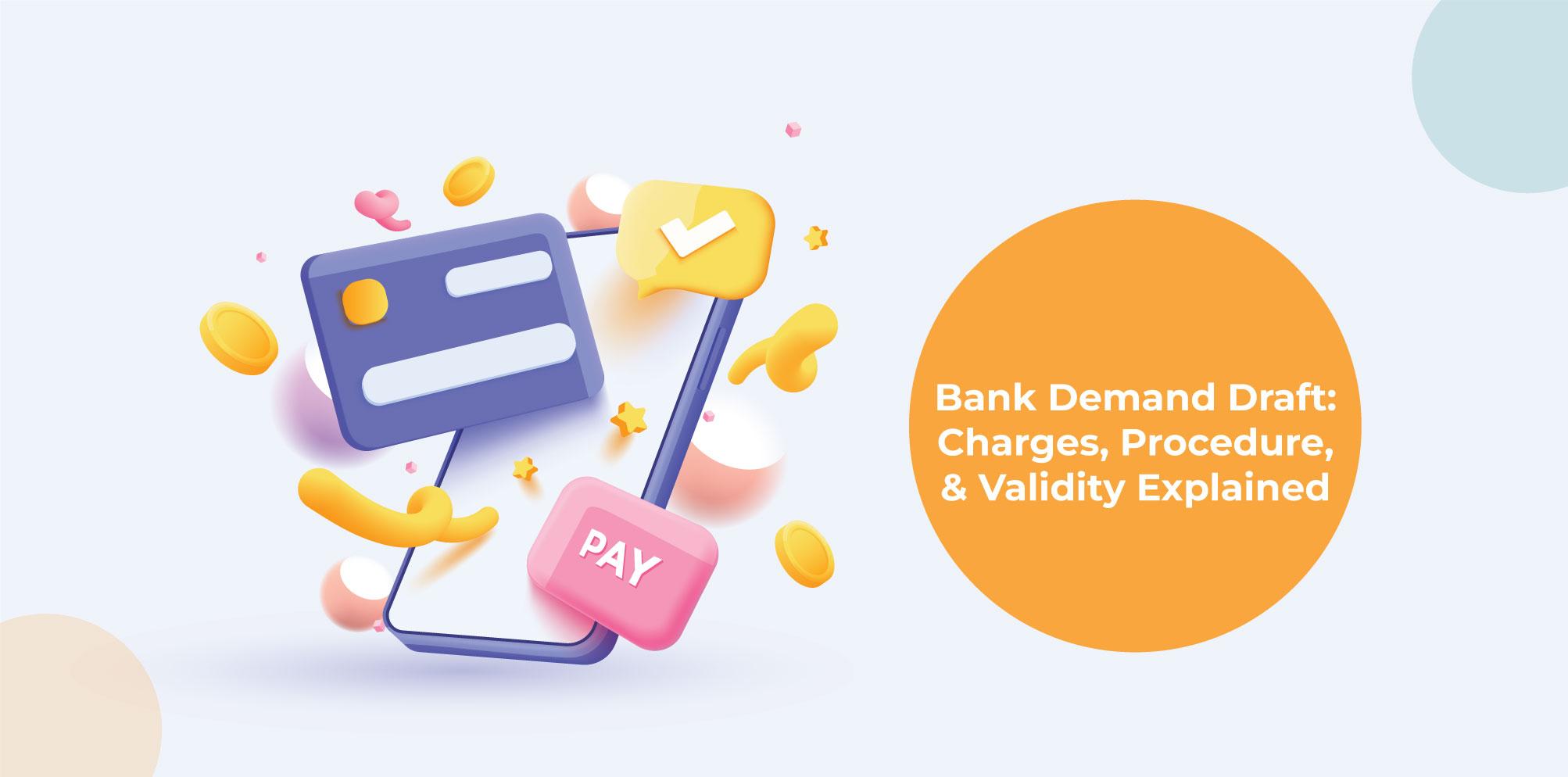Demand Draft Guide: Meaning, Types, How to Make One
Reviewed by: Fibe Research Team
- Updated on: 5 Jun 2025
Reviewed by: Fibe Research Team

A Demand Draft (DD) is a secure, prepaid way to transfer money through a bank. Unlike cheques, DDs don’t rely on the account holder’s balance at the time of clearance. The bank sets aside the amount when issuing the draft, so there’s no risk of it bouncing.
Despite digital banking options, demand drafts are still used for high-value or inter-bank payments. They’re easy to request and don’t require you to have an account with the issuing bank.
Keep reading to learn all about the Demand Draft Charges, their validity, types and more.
It is a money-transferring mechanism similar to a cheque. It offers security and a guarantee of successful money transfer as banks issue it only if the drawer has funds in their account. Check a brief overview of these banking instruments below:
Here are the two main types of DDs and their distinguishing characteristics:
This is an immediately payable DD. The payee can receive the amount in their bank account by presenting certain documents, including proof of identity. It is generally used for international transactions, ensuring a prompt transfer.
This type of demand draft is not immediately payable. The receiver can only transmit the DD amount to their bank account after the exact time, as noted on the DD.
Here are some key features of demand drafts:
You can get a demand draft either by visiting the bank or through internet banking. Here’s how both options work:
Step 1: Visit the nearest branch of your bank.
Step 2: Ask the bank staff for a demand draft application form.
Step 3: Fill out the form with details like amount, currency, payee name and reason for payment.
Step 4: Submit the form at the counter.
Step 5: Pay using cash, cheque or directly from your account. If the amount is above ₹50,000, provide your PAN.
Step 7: Keep a photocopy of the DD for your records.
Step 1: Log in to your bank’s internet banking account.
Step 2: Go to the ‘Requests or Enquiries’ section and select ‘Issue Demand Draft.’
Step 3: Choose the account you wish to pay from.
Step 4: Enter the amount, payee name and payment reason. Also, add the branch code and select the branch where the DD should be payable.
Step 5: Pick how you want the DD delivered, courier or branch pickup.
Step 6: Review all details and click ‘Submit’ to complete your request.
Both these methods are simple. You can choose the one that works best for you, depending on convenience and urgency.
Demand drafts stand out as monetary tools provided by the banks. They work when the drawer visits the bank and requests a DD. The bank then delivers the payee’s details and the amount.
The charge is then debited from the account, or the drawer produces the amount in cash. The drawer also has to pay extra fees if required. The bank will then administer the DD, which is given to the payee.
The useful thing about DDs is that they cannot bounce because of inadequate funds. They also don’t require any signature and stay useful for 3 months to 6 months.
Apply for an Instant Cash Loan
When you make a demand draft, you must pay specific Demand Draft Charges to process your request.
Here are the general charges that apply:
| Charge Types | Amount |
| Charges for DD preparation | ₹1.50 – ₹4 per ₹1,000 + GST |
| Charges for cancellation of DD | ₹100 – ₹300 + GST |
Disclaimer: These charges are subject to vary depending on the bank.
Take into account the following points when issuing a DD:
As a precaution against fraudulent transactions, you can’t encash demand drafts in cash. Here’s how it works now:
Here are some guidelines outlined by the RBI regarding DD:
With these simple steps, you can complete the demand draft procedure. The payee can credit the amount in their bank account by submitting the demand draft at their nearest branch. Equipping yourself with these details about a DD makes it easy for you to transfer funds across bank accounts without the risk of rejection.
Whether you are waiting to cash in a DD or need to create one, you can access funds without hassles on Fibe. With our Instant Personal Loan, you can avail of up to ₹5 lakhs within minutes, even if you are new to credit. Download our Personal Loan App or register on the website for quick funding at affordable rates!
Check the process of requesting a DD below:
In banking terms, a demand draft (DD) is a negotiable instrument for transferring funds without knowing the recipient’s account details.
You can visit any bank and request a demand draft form. After completing the form and submitting the cash, the bank will generate a DD for the cash amount.
A Demand Draft is used when you want to make secure payments. It’s commonly used for college fees, application forms, large deposits or transactions between two different banks.
The person whose name is on the DD needs to deposit it into their bank account. Once processed, the amount gets credited just like a cheque.
There is no fixed upper limit for issuing a DD. However, if the amount is ₹50,000 or more, PAN details are mandatory as per RBI rules.